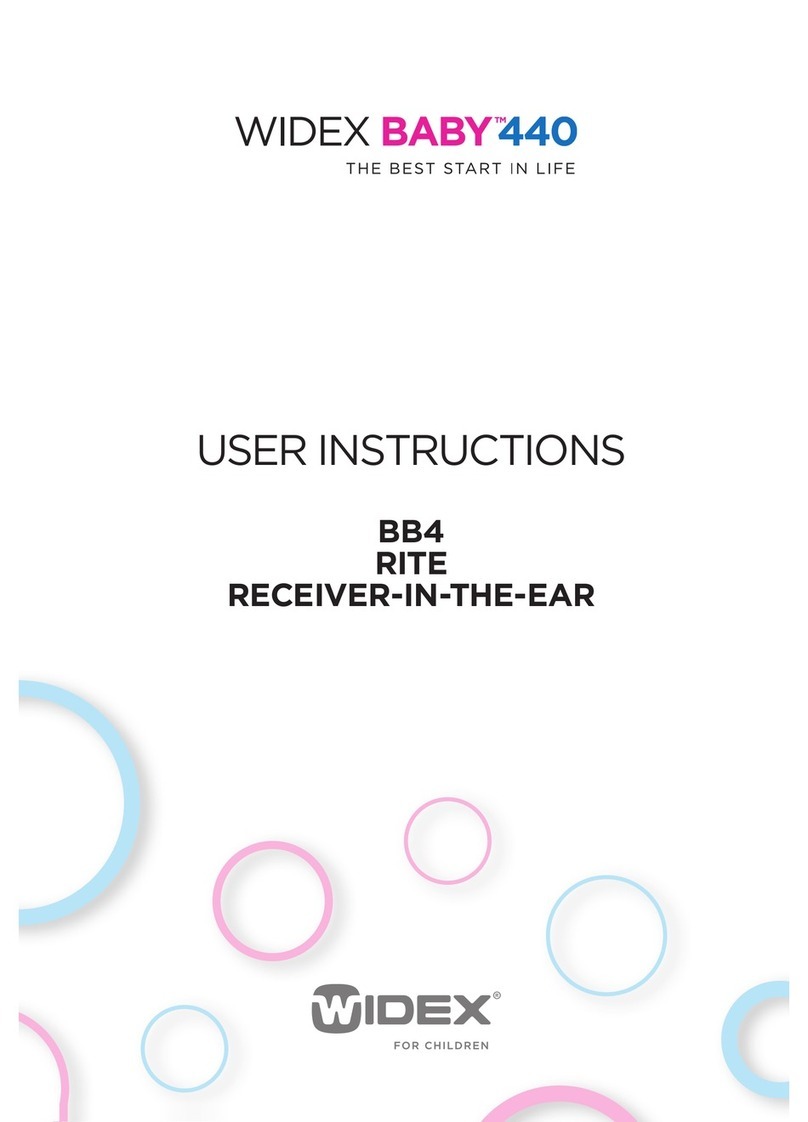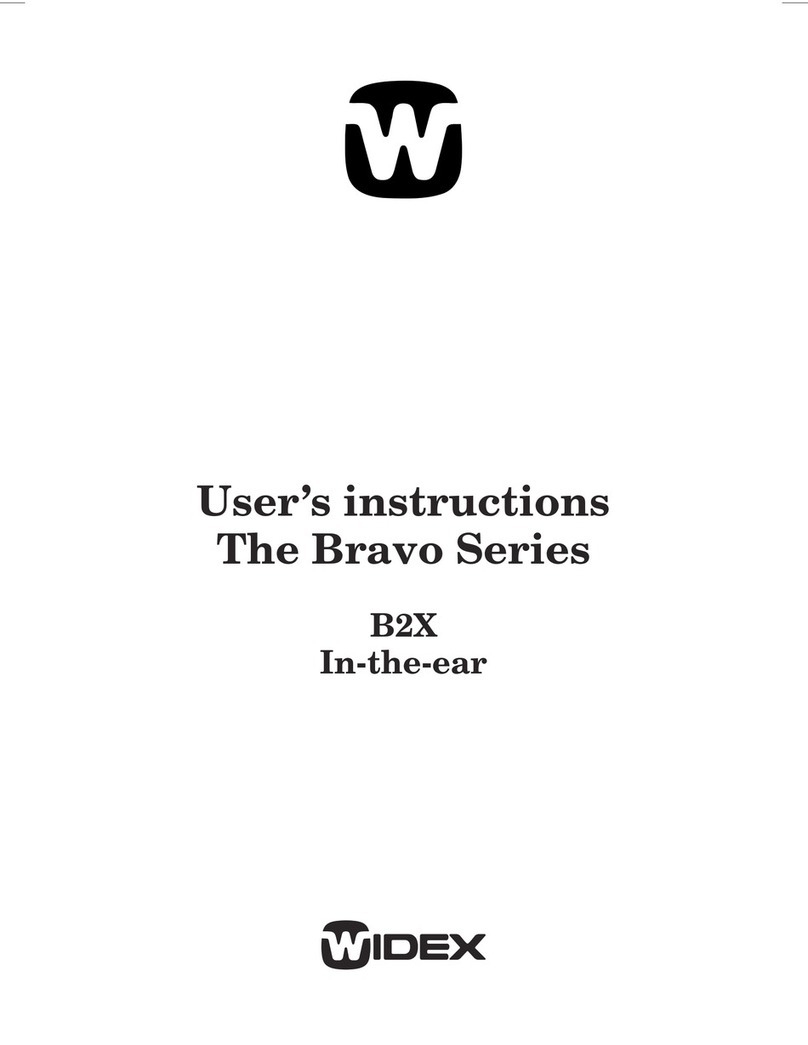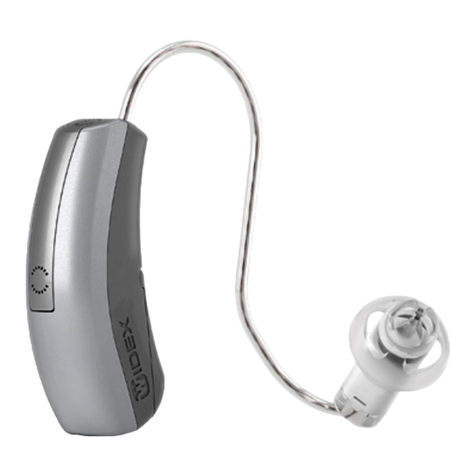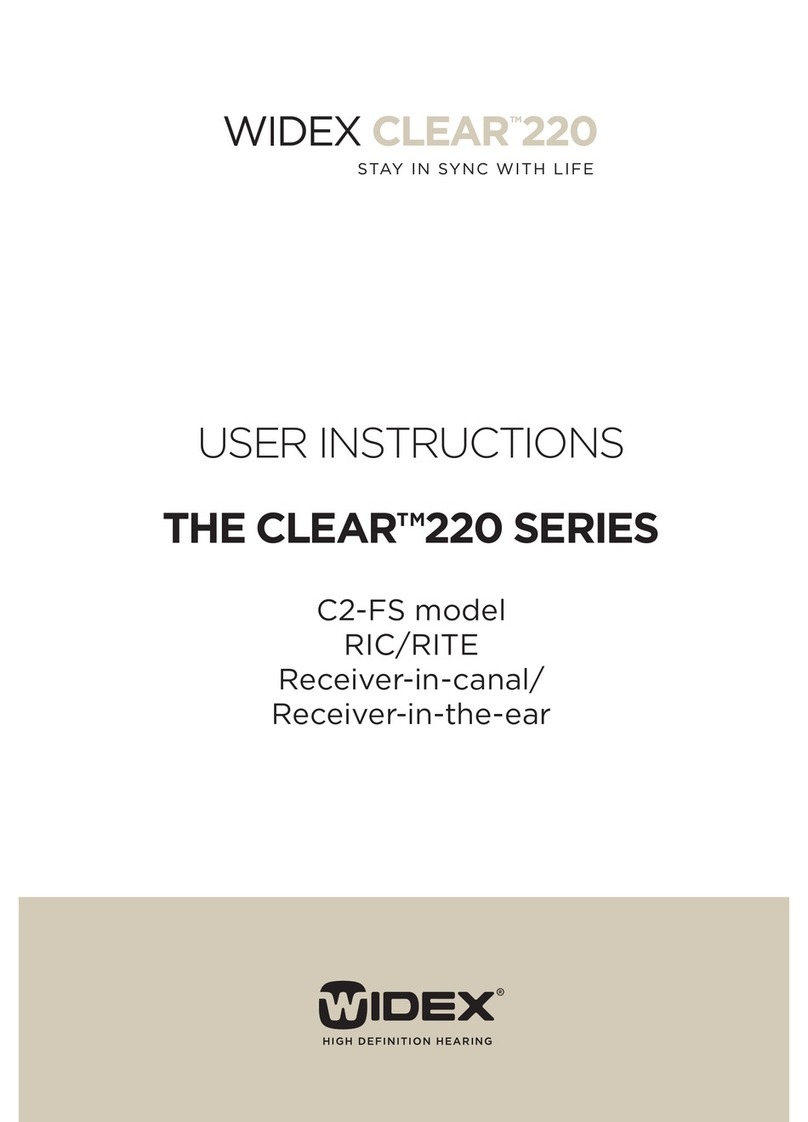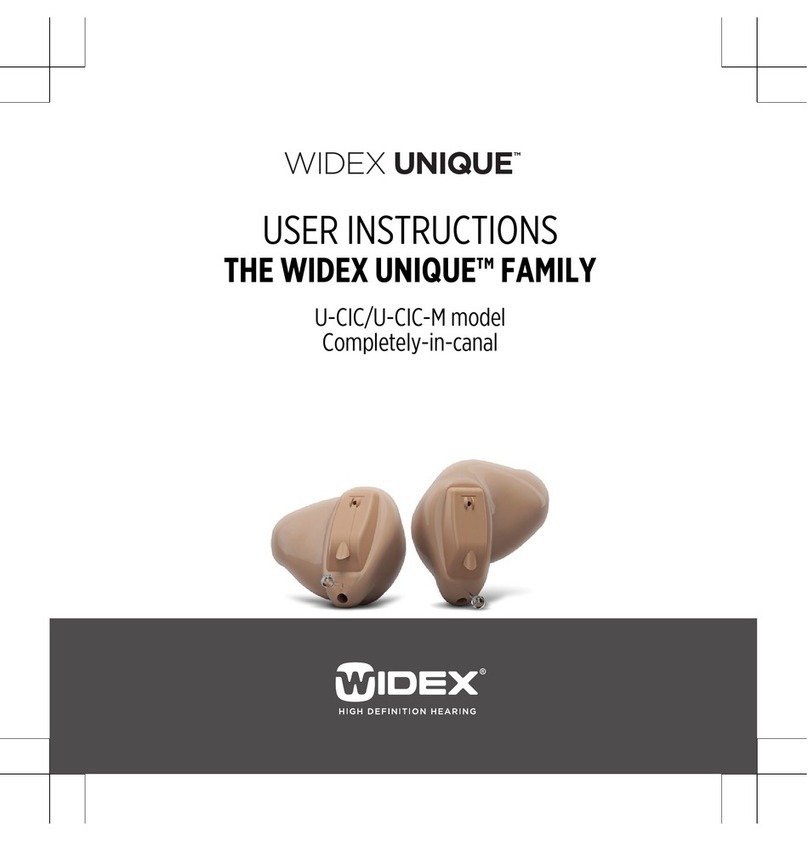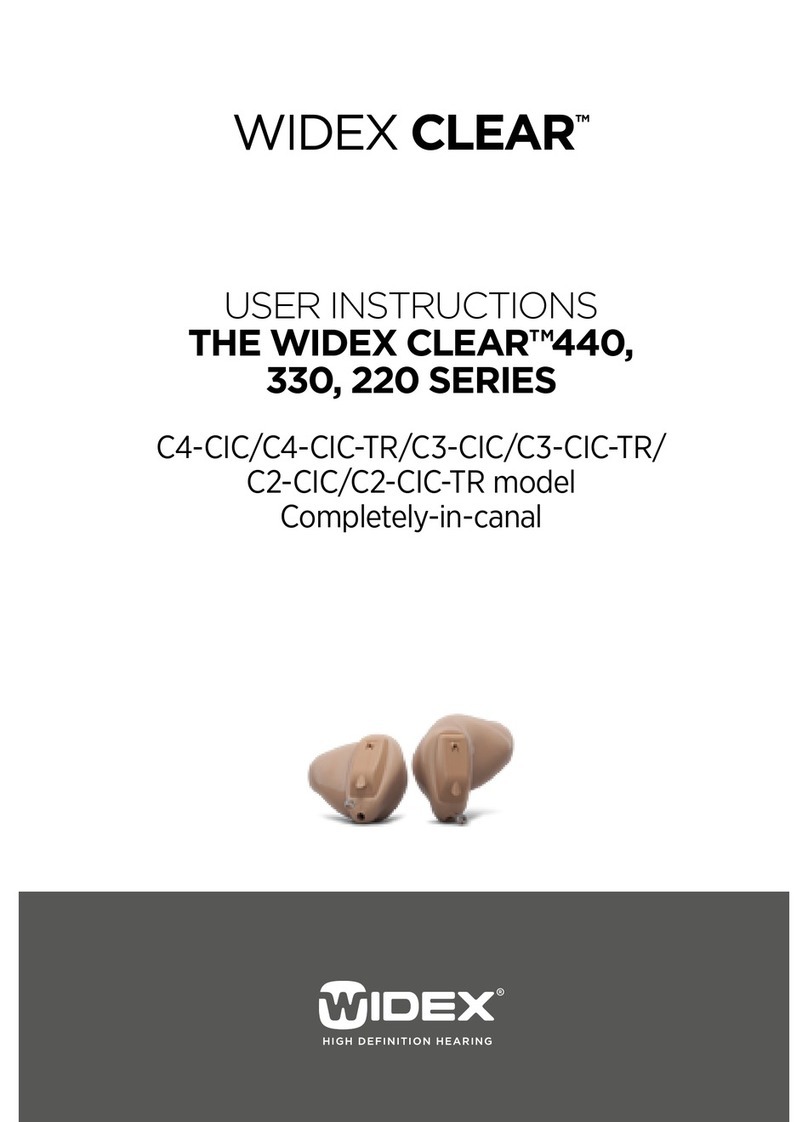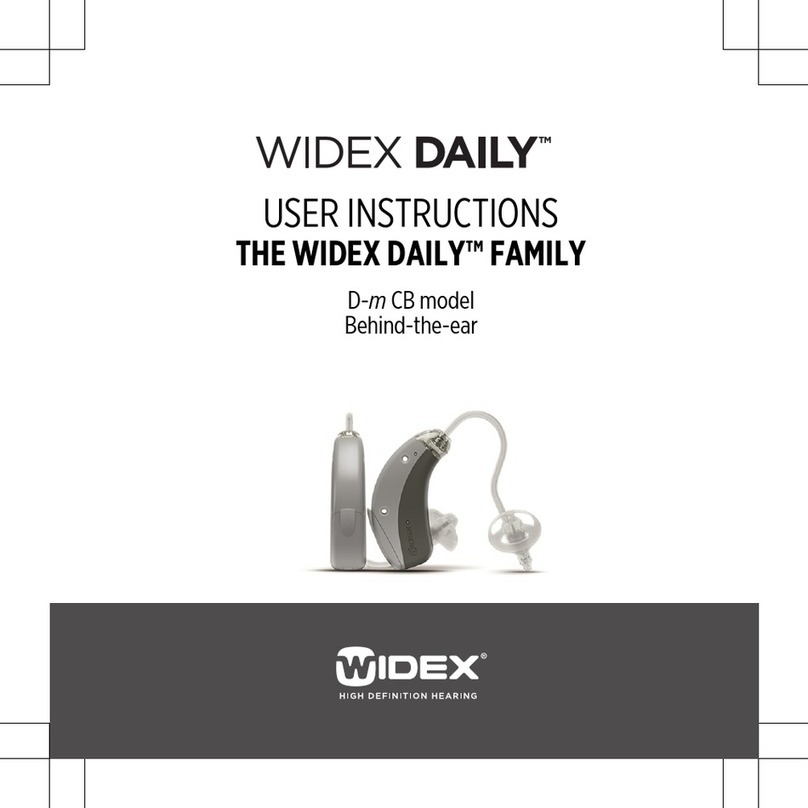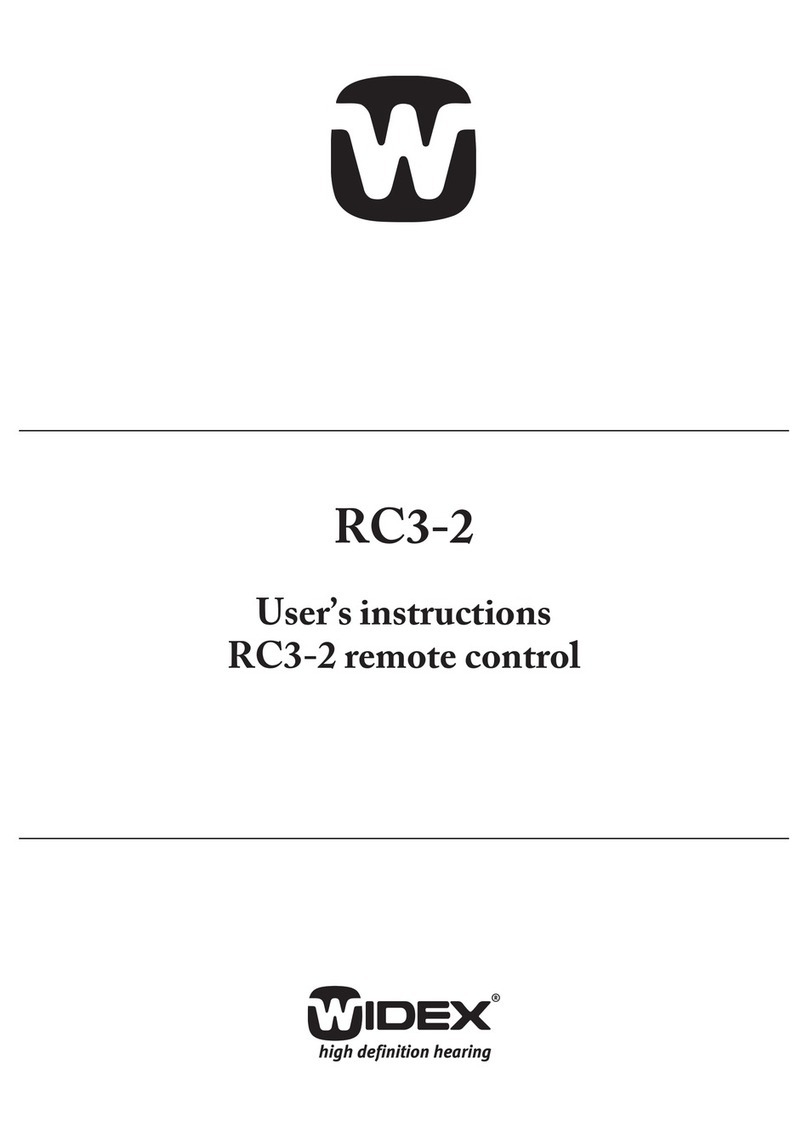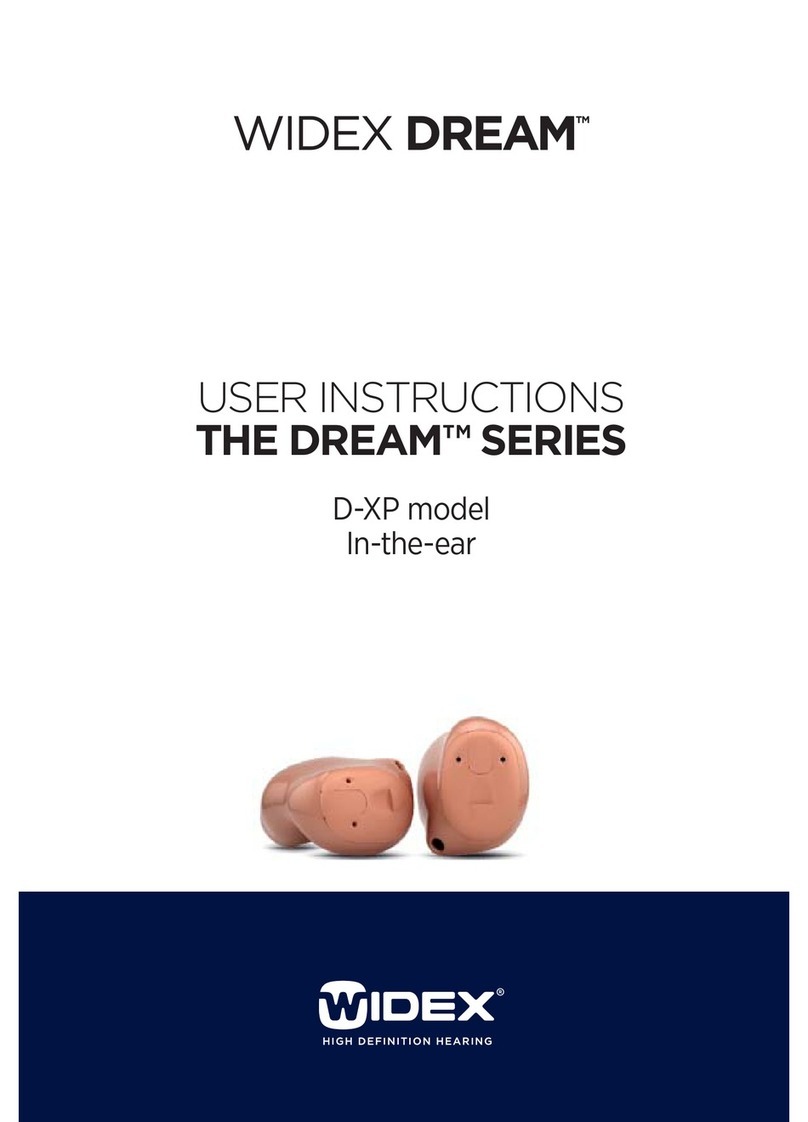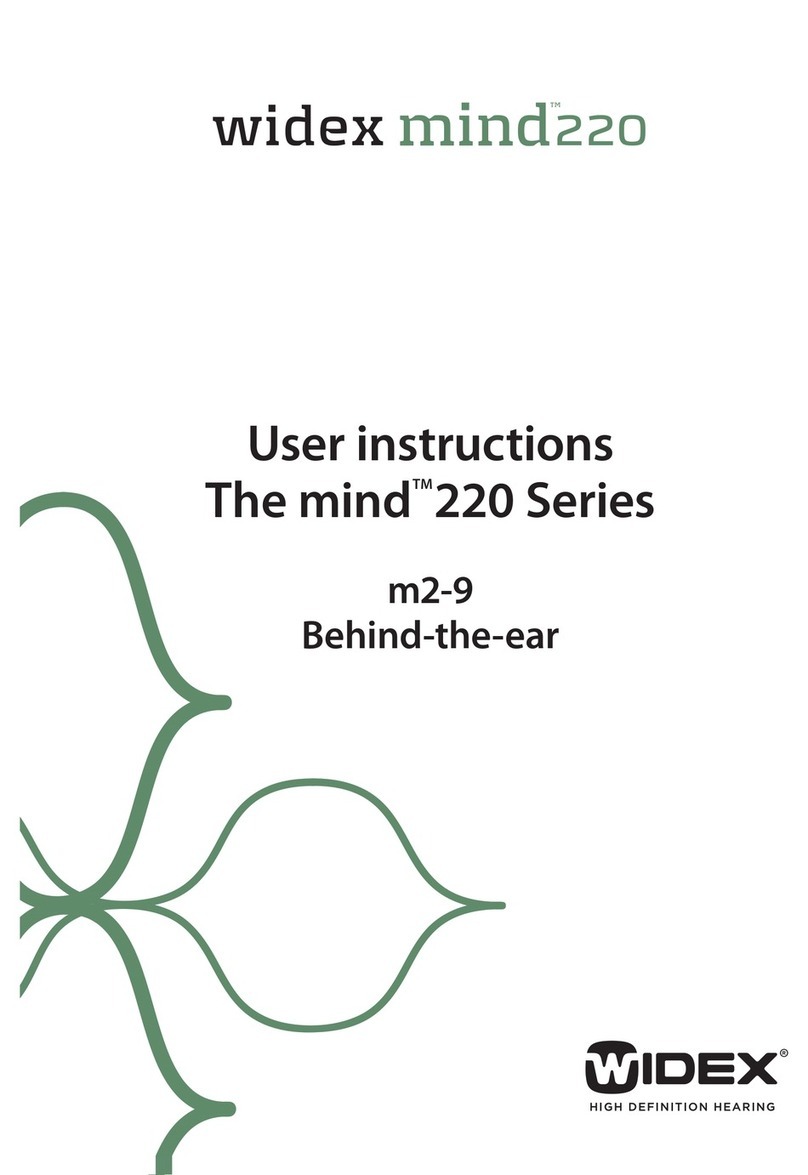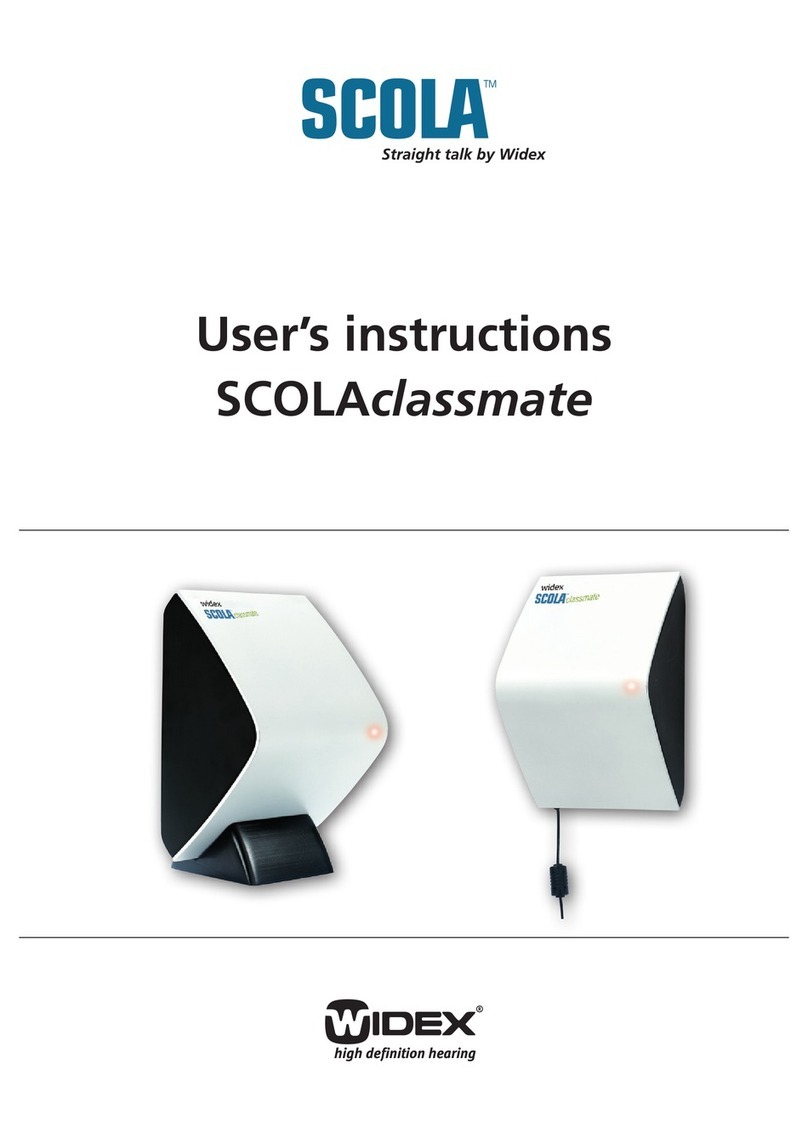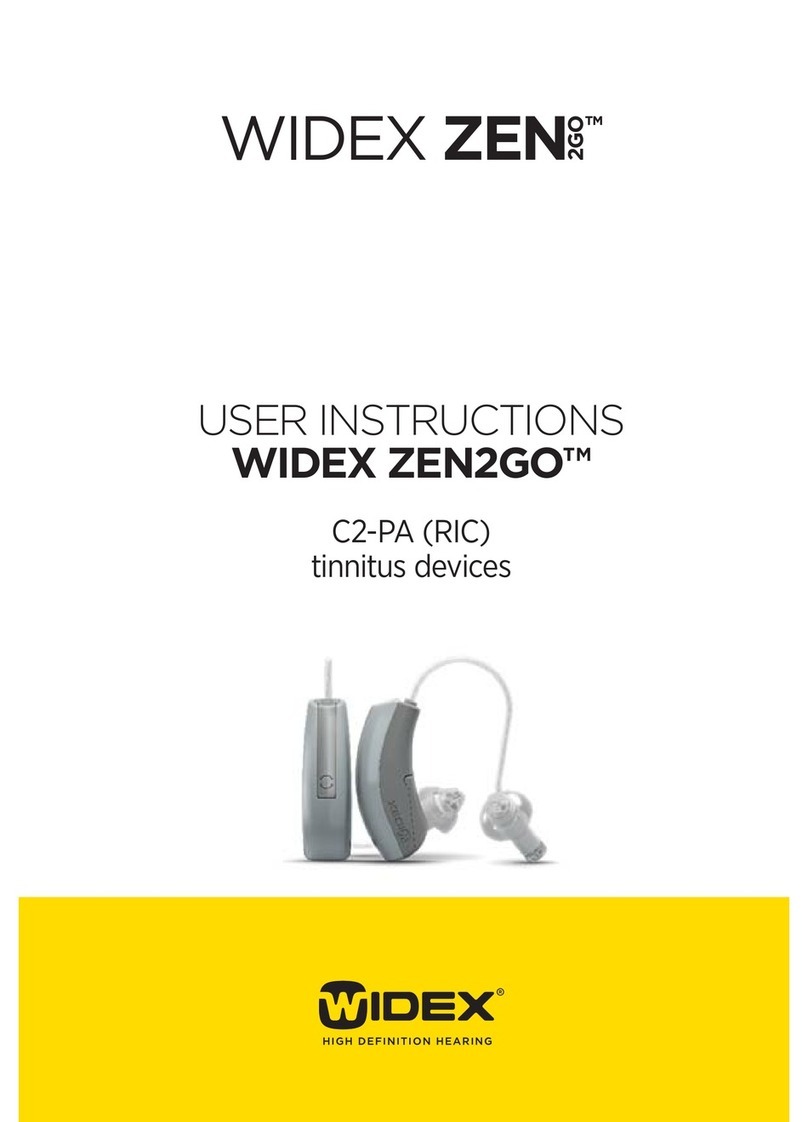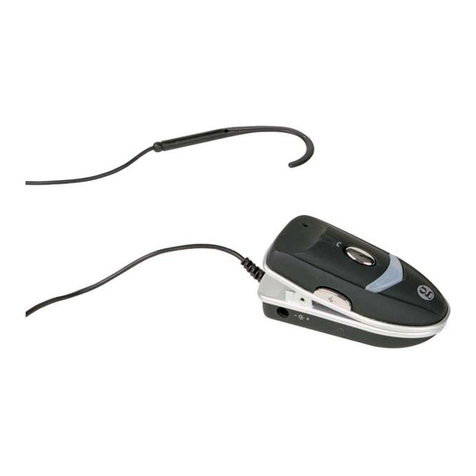
16 17
Zen: Makes fractal tones. The generated sounds are ad-
justed according to your hearing loss.
The Zen program may be used with amplification so
both the surrounding sounds and the fractal tones are
heard together. Or, it may be used alone (without am-
plification) in quiet when you are not required to hear
surrounding sounds.
If your hearing aid is provided with this program op-
tion, up to two listening programs with one Zen style
each can be programmed. Furthermore, a special Zen
program can be made available. This is called Zen+ and
can contain up to three Zen styles.
NOTE: The Zen listening program is only available in
mind440, mind330Z and mind220Z series models.
Zen+ is only available in the mind440 series.
Important
Use of the different Zen programs may interfere with
hearing surrounding sounds including speech. The pro-
grams should not be used when hearing such sounds is
important. Switch the hearing aid to a non-Zen pro-
gram in those situations.
Zen program
Your hearing aid may be provided with a unique op-
tional listening program called Zen. It makes musical
tones (and sometimes a rushing noise) in the back-
ground using the latest in Fractal technology. These
sounds are shaped according to your hearing loss so
you can listen to them at any time and at any place with
a simple push of the program button. The Zen program
may be used alone (without amplification) in quiet
when you are not required to hear surrounding sounds.
Or, it may be used with the Master program so both the
surrounding sounds and the generated sounds (fractal
tones and noise) are heard together.
Benefits
The Zen program provides a relaxing listening back-
ground for some people. When the Zen program is
used in a tinnitus management program, its wearer
may experience some relief from tinnitus.
Indications for use
The Zen program is intended to provide a relaxing
sound background (i.e., music/noise source) for adults
who desire to listen to such a background in quiet. It
may be used as a sound therapy tool in a tinnitus treat-
ment program that is prescribed by a hearing health-
care professional (audiologists, hearing aid specialists,
otolaryngologists) who is trained in tinnitus manage-
ment.


